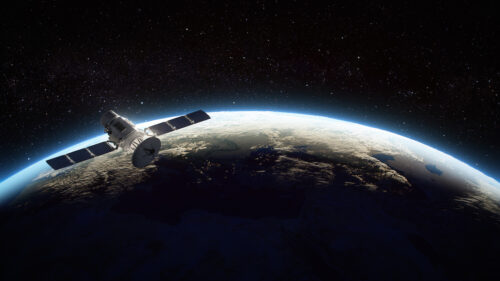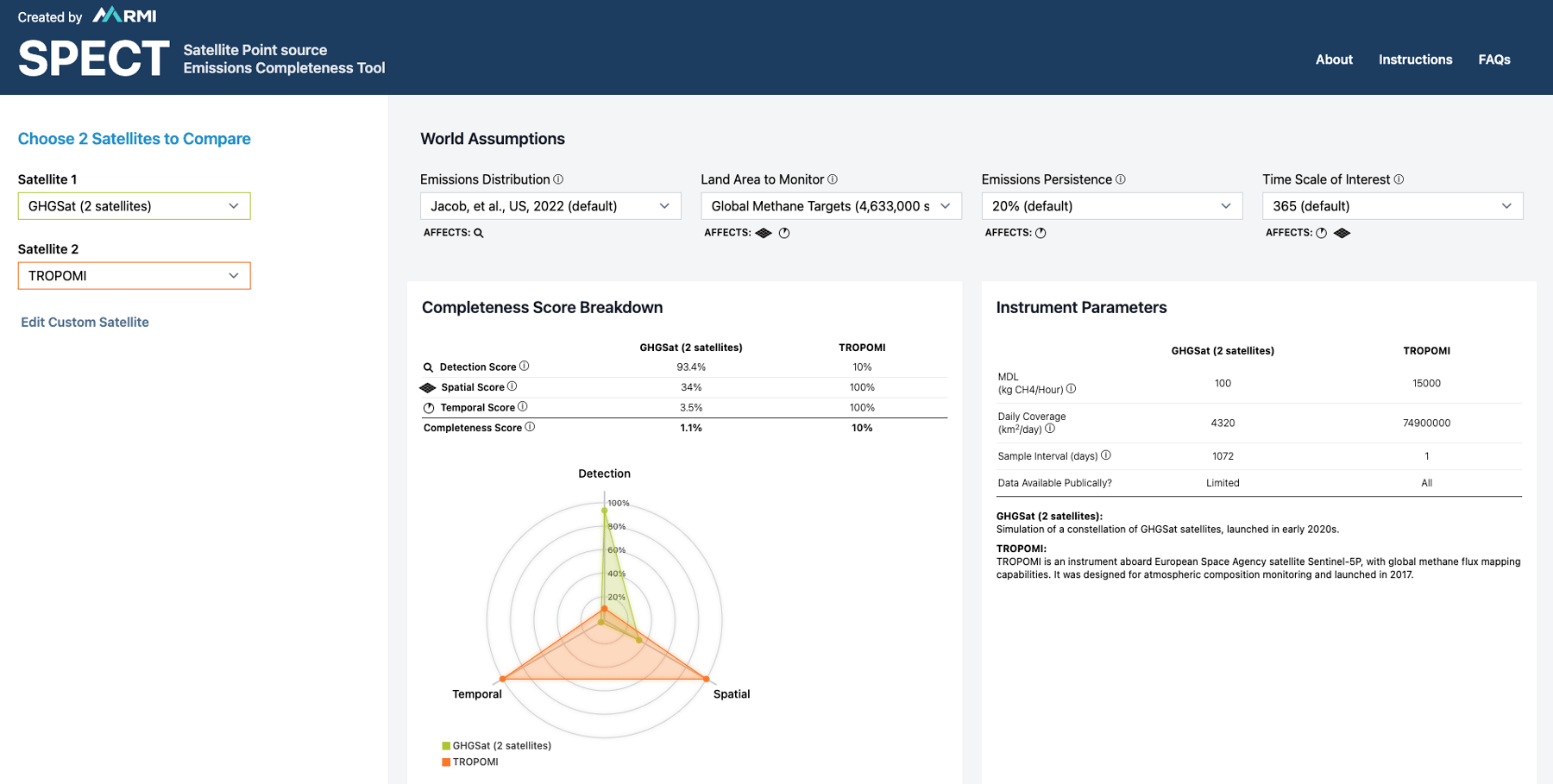Photorealistic 3d illustration of a satellite orbiting the Earth. World map texture credits to NASA: https://visibleearth.nasa.gov/images/74218

Report | 2023
Intel from Above: Spotting Methane Super-Emitters with Satellites
Existing and soon-to-be-launched satellite technologies are enabling us to rapidly detect, locate, and quantify large industrial point sources of methane. This new climate intelligence is critical as the world looks to reduce methane — a super potent greenhouse gas — to hold global temperature rise to 1.5°C and meet the Global Methane Pledge.
This report offers readers a better understanding of how satellites contribute to global measurement of — and ultimately reduction of — large methane sources including oil and gas systems, coal mines, landfills, and livestock operations in the United States and globally. It references and builds upon a newly proposed scientific metric, called “completeness,” which allows for meaningful comparison across satellite platforms.
We assess the completeness of single satellites and constellations of multiple satellites and describe our Satellite Point Source Emissions Completeness Tool (SPECT), designed to encourage adoption of this metric to:
- raise public awareness about satellite capabilities,
- provide industry operators and policymakers a tool for evaluating technologies that can address their needs to find and fix leaks,
- improve methane accounting, and
- inform methane mitigation policy design.

Visit the Satellite Point Source Emissions Completeness Tool
